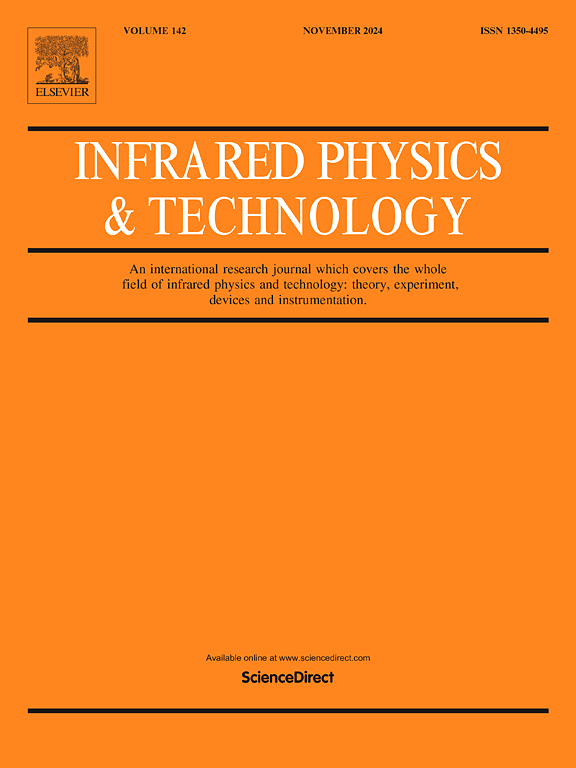复杂环境下红外行人分割的PCNN模型
IF 3.1
3区 物理与天体物理
Q2 INSTRUMENTS & INSTRUMENTATION
引用次数: 0
摘要
脉冲耦合神经网络(PCNN)广泛应用于红外行人图像分割。红外行人图像由于背景复杂、热源干扰、人体目标亮度分布不均匀以及容易与背景混叠,导致人体目标分割不完整,分割效果差。提出了一种用于复杂环境下红外行人目标分割的改进PCNN算法和一种优先分割背景区域的新思路。将红外行人图像表示为图结构,将红外图像中的超像素表示为图的节点。通过分析图的结构,对成为背景区域的每个节点的得分进行评估,并将得分映射到原始图像上作为模型的连接强度。相应地,设置动态阈值作为图像背景的聚类中心,对图像的背景区域进行优先分类和输出。该模型可以有效分割复杂环境下的红外行人图像,特别是对于背景热源干扰较多的红外图像。本文章由计算机程序翻译,如有差异,请以英文原文为准。
A PCNN model for infrared pedestrian segmentation in complex environments
Pulse Coupled Neural Network (PCNN) is widely used in infrared pedestrian image segmentation. Due to the complex background, heat source interference, uneven brightness distribution of human targets and easy aliasing with the background in infrared pedestrian images, the segmentation of human targets is incomplete and the segmentation effect is poor. An improved PCNN algorithm for segmenting infrared pedestrian targets in complex environments and a new idea of preferentially segmenting background regions are proposed. The infrared pedestrian image is represented as a graph structure, and the superpixels in the infrared image are represented as nodes of the graph. The score of each node becoming the background region is evaluated by analyzing the structure of the graph, and the score is mapped to the original image as the connection strength of the model. Correspondingly, the dynamic threshold is set as the clustering center of the image background, and the background region of the image is prioritized for classification and output. Infrared pedestrian images with complex environment can be effectively segmented by the model, especially for infrared images with more heat source interference in the background.
求助全文
通过发布文献求助,成功后即可免费获取论文全文。
去求助
来源期刊
CiteScore
5.70
自引率
12.10%
发文量
400
审稿时长
67 days
期刊介绍:
The Journal covers the entire field of infrared physics and technology: theory, experiment, application, devices and instrumentation. Infrared'' is defined as covering the near, mid and far infrared (terahertz) regions from 0.75um (750nm) to 1mm (300GHz.) Submissions in the 300GHz to 100GHz region may be accepted at the editors discretion if their content is relevant to shorter wavelengths. Submissions must be primarily concerned with and directly relevant to this spectral region.
Its core topics can be summarized as the generation, propagation and detection, of infrared radiation; the associated optics, materials and devices; and its use in all fields of science, industry, engineering and medicine.
Infrared techniques occur in many different fields, notably spectroscopy and interferometry; material characterization and processing; atmospheric physics, astronomy and space research. Scientific aspects include lasers, quantum optics, quantum electronics, image processing and semiconductor physics. Some important applications are medical diagnostics and treatment, industrial inspection and environmental monitoring.

 求助内容:
求助内容: 应助结果提醒方式:
应助结果提醒方式:


